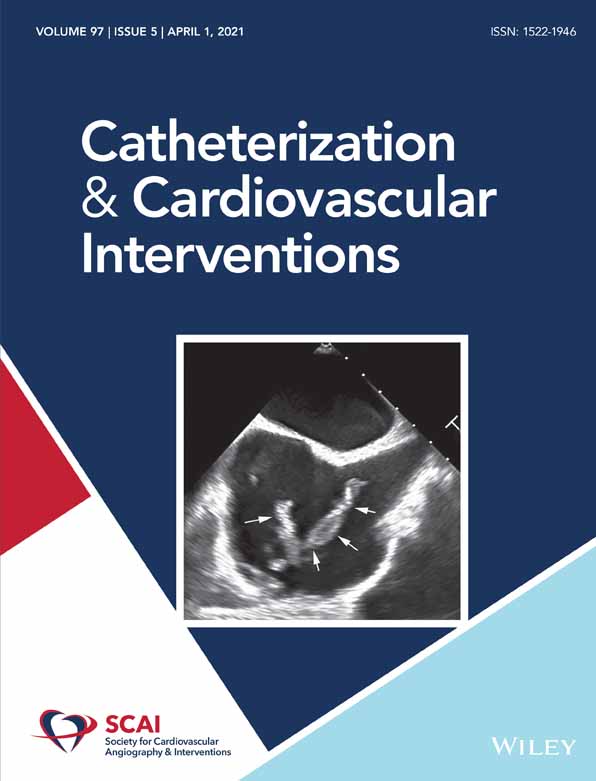A novel technique for postclosure of large-bore sheaths using two Perclose devices
Abstract
Objectives
This study aimed to assess the feasibility, efficacy, and safety of a novel percutaneous postprocedure closure technique for large arterial sheath removal with the use of two Perclose ProGlide (Abbott Vascular Devices, Redwood City, CA) devices.
Background
Postprocedural closing of large-bore arteriotomies using the Perclose system can be difficult given the subsequent inability of the device to capture sufficient wall tissue.
Methods
Our study was a single-center retrospective analysis of 22 consecutive patients who underwent large arteriotomy closure via the postclosure technique with a 12–16-Fr sheath. Efficacy endpoints included successful deployment of the system and hemostasis. Safety endpoints included the incidence of major or minor vascular complications as defined by the Vascular Academic Research Consortium-2 (VARC-2) definitions at 30-day follow-up.
Results
The postclosure technique resulted in 100% technical success rate and no postprocedural bleeding or vascular complications.
Conclusion
Postclosure technique is a safe, highly effective, and feasible percutaneous method to achieve large-bore arteriotomy hemostasis with low rates of major bleeding or vascular complications and favorable early outcome.
CONFLICT OF INTEREST
The authors declare no conflicts of interest.
Open Research
DATA AVAILABILITY STATEMENT
Data available on request due to privacy/ethical restrictions.




